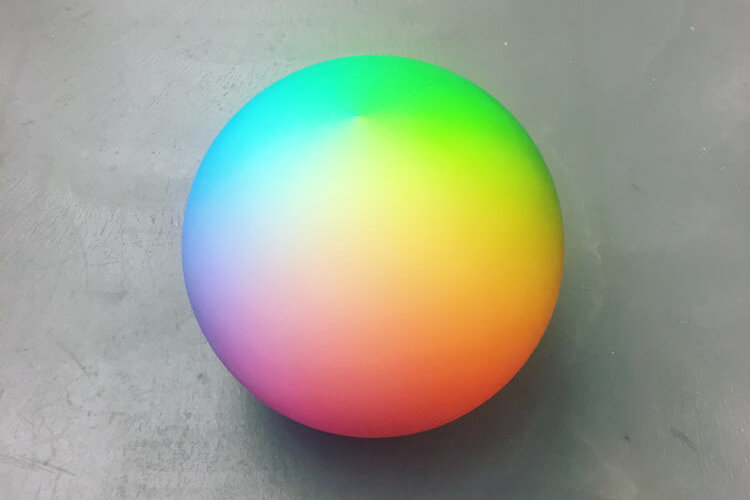“Concrete Contemporary. Now is always also a little of yesterday and tomorrow” – this is the name of a new exhibition in the Haus Konstruktiv museum in Zurich. The curator and museum director Sabine Schaschl looked at the relationship between contemporary art and the constructivist, concrete and conceptual art of the 20th century. The exhibition is situated on all four floors of the museum building and includes the works of 34 artists from different countries.
The visitor is impressed from the first moment by the variety of the exhibition program. In the middle of the hall on a white platform in ordered rows are 80 white chairs. The chairs look as though they have just come from the workshop – you can still see dust, wood shavings and offcuts scattered around.
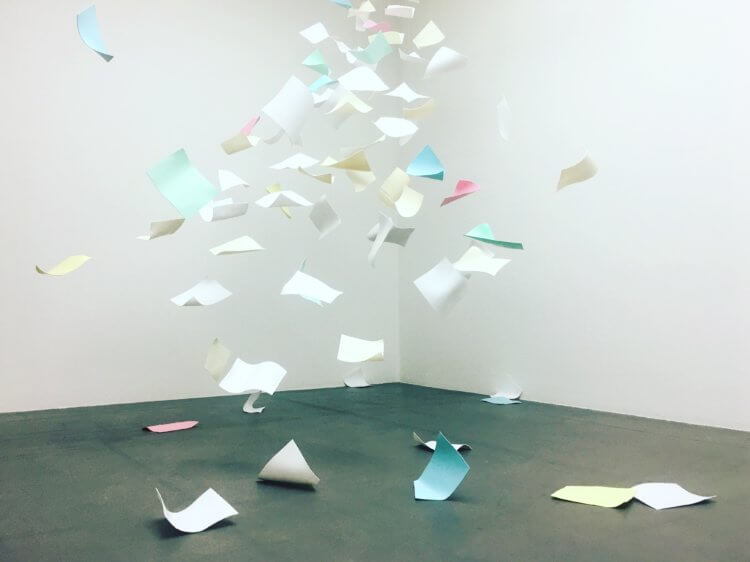
Otto Berchem and Amalia Pica. Mobilize, 2017
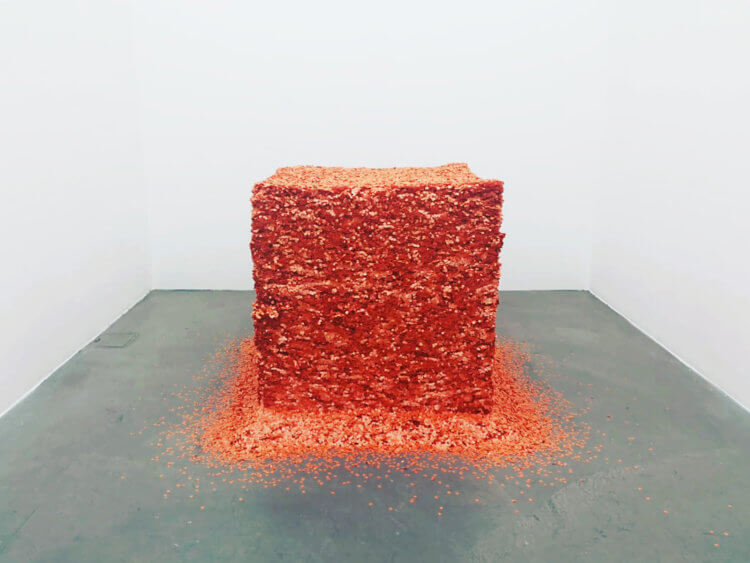
Lara Favaretto. Evidently Collapsed, 2013
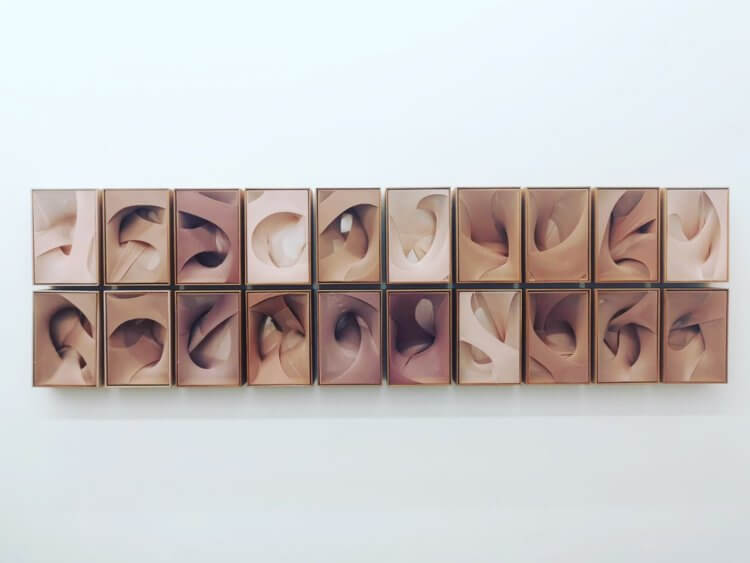
Martin Soto Climent. Gossip, 2019
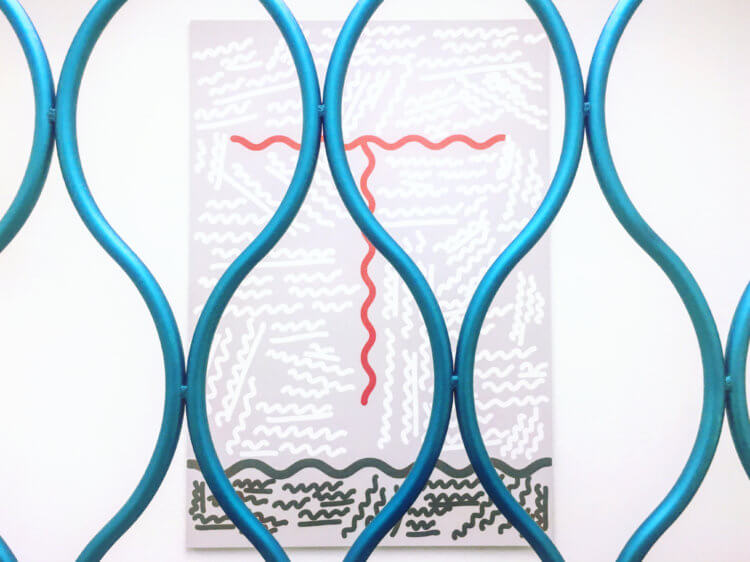
Diango Hernández. Cascadas, 2018
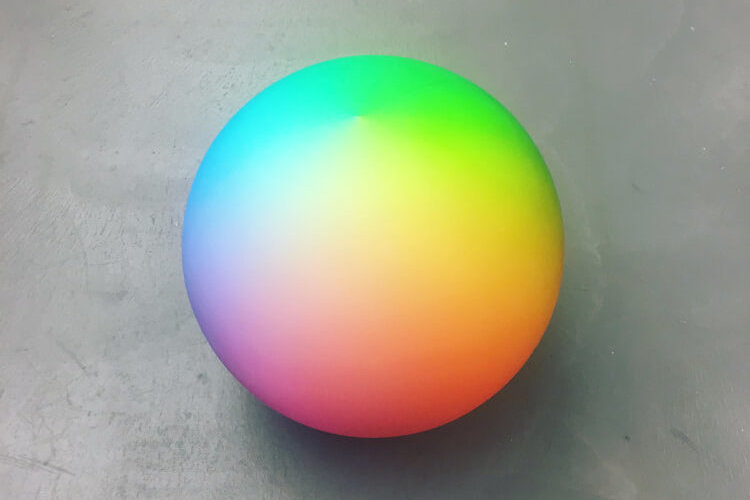
Chris Cornish. There is mystery everywhere, 2015
Design enthusiasts will immediately recognize the similarity with the Danish designer Arne Jacobsen’s “Ant Chair”, which received its name because of its similarity to an ant’s head. What we see here are 80 unauthorized and slightly modified copies made by SUPRERFLEX, a group of Danish artists. With the “Copy Right (white version)” installation they draw attention to the connection between art, design and mass production.
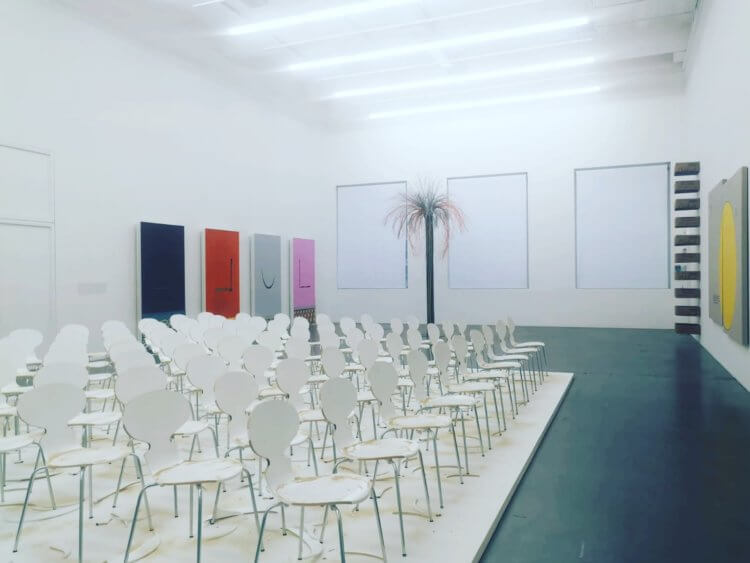
SUPRERFLEX. Copy Right (white version), 2016
In the next room the visitor´s gaze falls on “Good Vibe Gongs”, round steel plates in different sizes and colors on a pale pink background. These sculpted objects were created by the Swiss artist David Renggli. This colorful and creative work is clearly related to traditional gong instruments. The sound of this instrument vibrates and creates new complex sounds that are supposed to trigger positive emotions.
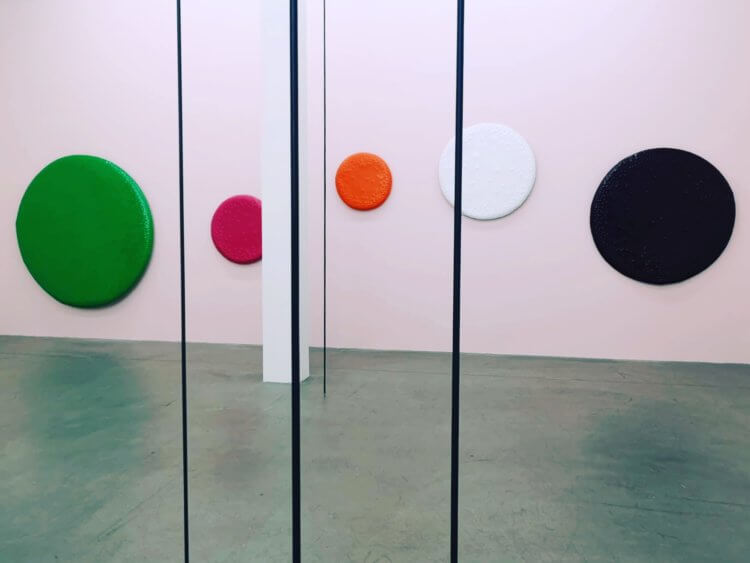
David Renggli. Good Vibe Gongs, 2018/2019
Even before seeing the work Florenz-Bagdad by German-Iranian artist Timo Nasseri, the visitors are mesmerized by the glares on the floor and walls, coming from the small exhibition room. The room itself turns out to be bigger than it seemed, its walls are covered with triangular mirror segments of various sizes. There is a specific optical illusion in this space that separates and projects in a new way people, objects and the room itself. Familiar reflections become unknown and let a viewer open new and unusual doors of perception. This fragmentary view of the world hints at the idea that as much as we try, we cannot see the full picture, but instead we are only able to see fractional parts in various combinations. The artist connects western and eastern culture described in the book of art historian Hans Belting “Florenz and Bagdad”. Nasseri focuses in his work on the difference and reciprocity between western and eastern art.
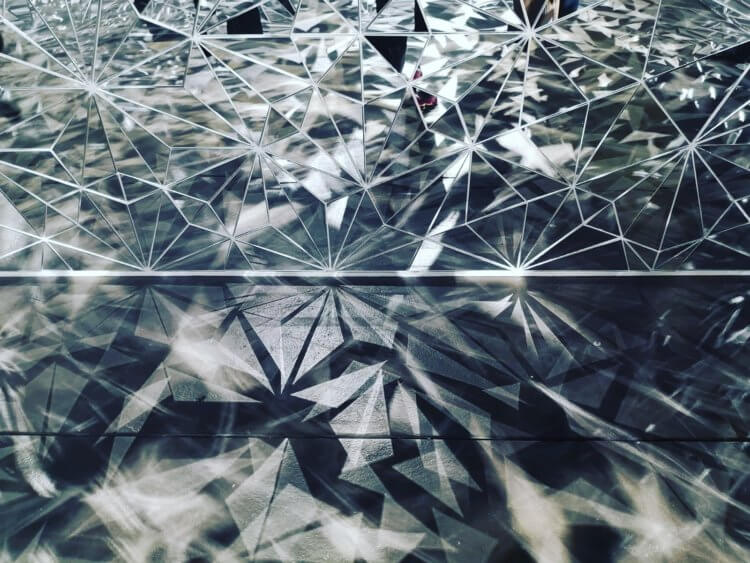
Timo Nasseri. Florenz-Bagdad, 2016
You can visit “Concrete Contemporary. Now is always also a little of yesterday and tomorrow.” exhibition until May 5, 2019.
